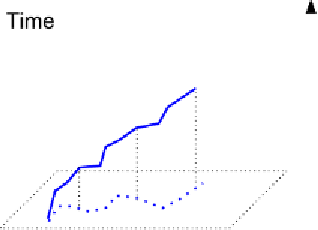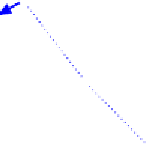Database Reference
In-Depth Information
(a) Trajectory Object
(b) Moving Object
Figure 10.2.
Different types of data that may be extracted from mobile objects.
In (a), a full trajectory is stored which describes an object's movement in space over
a historic time interval. In (b), the position and velocity of an object are stored at
the current time, however, historic information is not maintained.
poral data, we also introduce some specific problems in handling data
uncertainty.
Many of the index structures for spatiotemporal trajectories are based
on the R-tree [28, 5, 73]. For a comprehensive review of spatio-temporal
indexing methods we refer the interested reader to [57] and [55].
2.1 Spatiotemporal Database Systems
A STDB allows the user to eciently query the historic movements
of a set of objects over a period of time (in the past). Although queries
over spatiotemporal data can be quite complex [29], the basic queries
that every STDB should answer are time-interval
range
and
nearest-
neighbor
queries. A time-interval range queries answers the question
“which objects traveled through region
R
between the times
t
start
and
t
end
?” (note that
t
end
is some time point in the past). For instance, this
could be used to find out which vehicles traveled within a city during
rush hour. The semantics for the time-interval nearest neighbor query
may change slightly between systems, but the basic idea is to return the
set of objects closest to some query point over a given time interval.
Pfoser et al. [66] distinguish between two types of queries on trajec-
tories as
topological queries
and
navigational queries
. Topological
queries are concerned with finding a set of trajectories that satisfy some
spatial and temporal constraint. Range and nearest-neighbor queries
over a time slice or interval are prime examples of topological queries.
Navigational queries are based on derived information extracted from
the trajectory and may involve dynamic information about the objects























